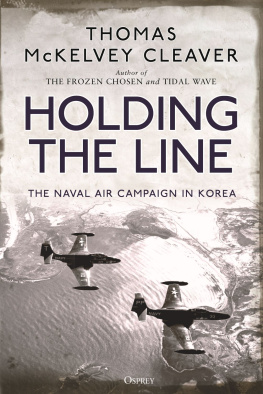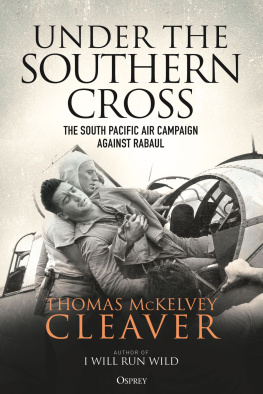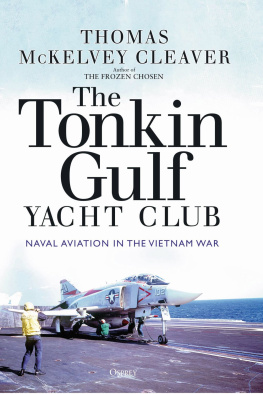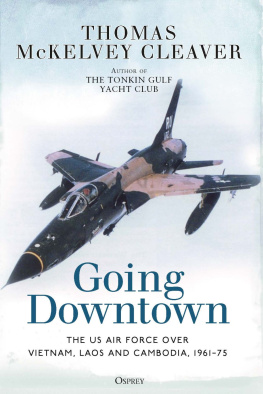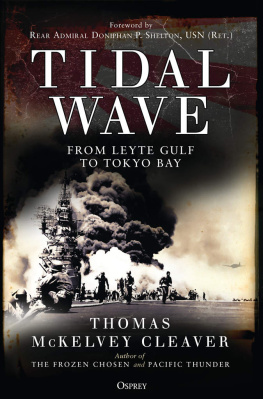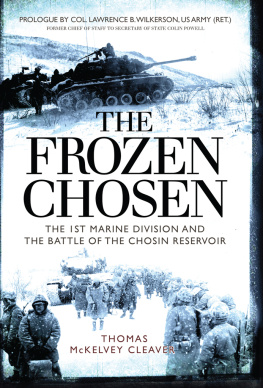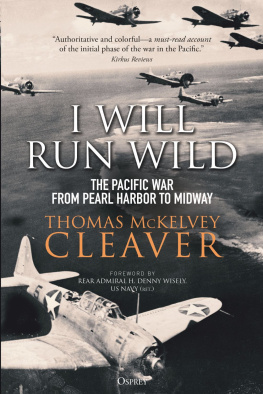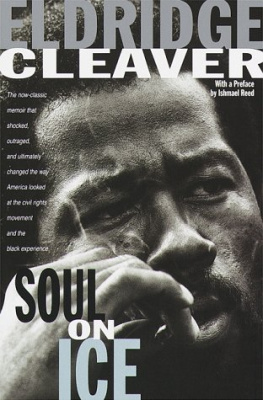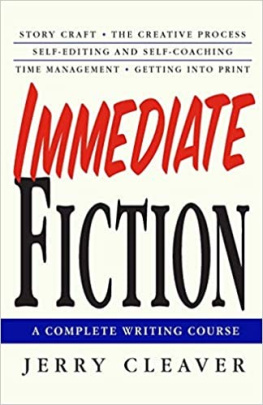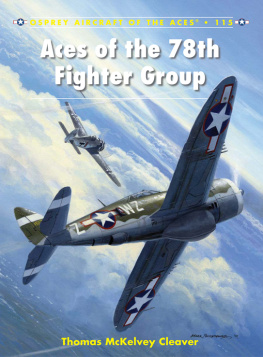Thomas McKelvey Cleaver - Holding the Line
Here you can read online Thomas McKelvey Cleaver - Holding the Line full text of the book (entire story) in english for free. Download pdf and epub, get meaning, cover and reviews about this ebook. publisher: Bloomsbury Publishing, genre: History. Description of the work, (preface) as well as reviews are available. Best literature library LitArk.com created for fans of good reading and offers a wide selection of genres:
Romance novel
Science fiction
Adventure
Detective
Science
History
Home and family
Prose
Art
Politics
Computer
Non-fiction
Religion
Business
Children
Humor
Choose a favorite category and find really read worthwhile books. Enjoy immersion in the world of imagination, feel the emotions of the characters or learn something new for yourself, make an fascinating discovery.
- Book:Holding the Line
- Author:
- Publisher:Bloomsbury Publishing
- Genre:
- Rating:3 / 5
- Favourites:Add to favourites
- Your mark:
- 60
- 1
- 2
- 3
- 4
- 5
Holding the Line: summary, description and annotation
We offer to read an annotation, description, summary or preface (depends on what the author of the book "Holding the Line" wrote himself). If you haven't found the necessary information about the book — write in the comments, we will try to find it.
Thomas McKelvey Cleaver: author's other books
Who wrote Holding the Line? Find out the surname, the name of the author of the book and a list of all author's works by series.
Holding the Line — read online for free the complete book (whole text) full work
Below is the text of the book, divided by pages. System saving the place of the last page read, allows you to conveniently read the book "Holding the Line" online for free, without having to search again every time where you left off. Put a bookmark, and you can go to the page where you finished reading at any time.
Font size:
Interval:
Bookmark:

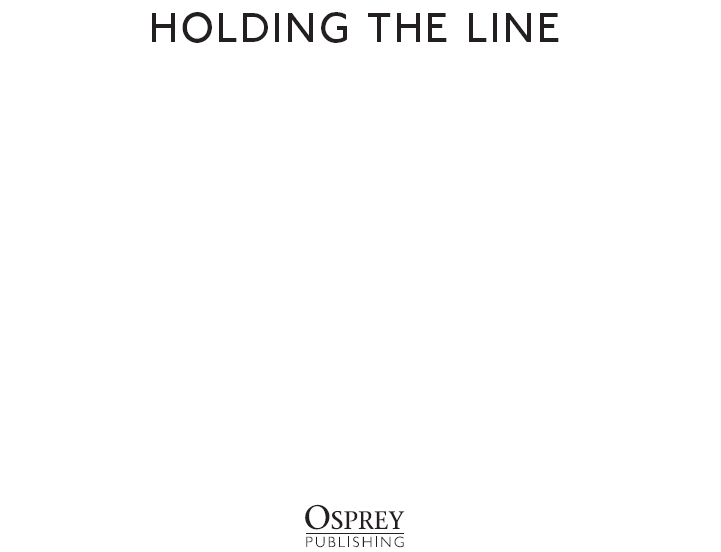

Contents
FJ-1 Fury aboard USS Boxer in 1948.
Convair B-36 intercontinental bomber.
Jesse L. Brown, Jr., the US Navys first African-American naval aviator.
Lockheed P2V-3 Neptune on takeoff from USS Midway .
FJ-1 Furies aboard USS Princeton in 1949.
Ryan FR-1 Fireball fighter.
McDonnell F2H-2P Banshee.
HMS Triumph and her air group in 1950.
Royal Navy Hawker Sea Fury FB.11 that operated from HMAS Sydney .
F9F-3 Panthers aboard USS Valley Forge , 1950.
VA-195 AD-3 Skyraider aboard USS Princeton , c .1950.
USS Juneau replenishing at Sasebo, summer 1950.
F9F-2 Panther aboard USS Philippine Sea , July 4, 1950.
F9F-2 prepares to launch from USS Valley Forge , July 19, 1950.
Il-10 abandoned at Kimpo airfield, September 1950.
F4U-4B overflying US ships at Inchon, Korea, September 15, 1950.
Ed Jackson landing aboard USS Philippine Sea on September 17, 1950.
USS Valley Forge and USS Leyte at Sasebo, October 1950.
F4U-4 Corsair crashes off Valley Forge , October 22, 1950.
AD-3 Skyraider armed with two 1,000lb bombs and eight 100lb fragmentation bombs.
Bombs explode around the Sinuiju bridge, November 1950.
North Korean train strafed and bombed by Navy fliers.
VMF(N)-513 plane, November 2, 1950.
VF-31 pilots aboard USS Leyte belting cannon shells, November 7, 1950.
USS Valley Forge prepares to depart San Diego, December 1950.
Douglas AD-4 Skyraider crashlands on USS Philippine Sea , December 12, 1950.
Sikorsky HO3S-1 Horse, December 13, 1950.
USS Missouri fires a broadside, December 26, 1950.
VMF-323 Corsairs of USS Sicily during the Pusan Perimeter fighting.
Modified AD-4Q Skyraider aboard USS Essex , 1951.
AD-2 Skyraiders bomb a rail target in North Korea, 1951.
Downed bridge in Carlsons Canyon, March 1951.
VA-195 Skyraider with aerial torpedo, April 1951.
Lt(jg) Ed Phillips of VA-195, April 1951.
Hwachon Dam struck by VA-195, May 1, 1951.
AD-4 Skyraider landing aboard USS Bon Homme Richard , July 3, 1951.
F9F-2 Panthers from USS Boxer over North Korea, July 15, 1951.
F9F-2B and F9F-2P return to USS Boxer , August 6, 1951.
USS Essex on fire off Korea, September 1951.
F4U-4 Corsairs over USS Boxer , September 4, 1951.
Ordnancemen on USS Bon Homme Richard fuse bombs, November 10, 1951.
F4U-4 Corsair ready for catapult launch from USS Bataan .
Two F9F-2 jets from USS Essex over Korea in 195152.
USS Buck , USS Missouri and USS St. Paul off the coast of Korea, 1952.
Snowy weather aboard USS Essex , January 18, 1952.
Neil A. Armstrong in his USNR uniform, May 23, 1952.
USS Barton with USS Philippine Sea and USS Missouri , July 1, 1952.
F6F-5K drone and its AD-4 Skyraider control aircraft aboard USS Boxer, August 1952.
AJ-1 Savage attack plane aboard USS Oriskany , August 29, 1952.
1st Marine Air Wing planes assault hill positions, October 1, 1952.
Four Banshees fly over USS Kearsarge , October 29, 1952.
Grumman F9F-2 Panther bombs a bridge, November 1952.
Ordnancemen load bombs on an AD-4 Skyraider, November 25, 1952.
Two F2H-2 Banshees over North Korea, January 5, 1953.
Snowy flight deck of USS Oriskany , January 10, 1953.
USS Philippine Sea , May 1953.
Skyraiders of VF-194 aboard USS Boxer , June 1, 1953.
Guy P. Bordelon.
USS Valley Forge underway in 1950.
It is now almost seven decades since North Korean troops attacked South Korea in the summer of 1950. Since that time, numerous changes have taken place both in Asia and in the global strategic environment. The Cold War, the defining construct for American foreign policy from 1948 through 1989, is over: todays young Americans have no personal memory of it, no recollection of the constant threat of global superpower nuclear exchanges; no recollection of duck and cover drills; no recollection of weekly siren and emergency radio tests; no recollection of a Europe divided into free and captive camps, and a Berlin split by a grim gray wall with watchtowers and border guards all too ready to shoot those trying to flee the faux workers paradise that was East Germany; and no recollection of proxy wars around the globe driven by the clash of Communist and non-Communist ideologies. Communism itself has largely died, with even those countries still paying homage to it led more by centralized self-serving dictatorial bureaucrats seeking their market share of the worlds wealth than Marxist true believers concerned over the fuzzily defined and ever-shifting proletariat. Indeed, arguably there are more sincerely committed ideologues extolling Marx, Engels, Lenin, etc. wandering about on American and European university campuses than in the real world realpolitik of Cuba, North Korea, Vietnam, the Peoples Republic of China, etc.
It is well that Thomas Cleaver, a noted military and aviation historian, has turned his formidable skills to examining one of the most important of these wars, that fought in Korea from the mid-summer of 1950 to the mid-summer of 1953. Known for decades as The Forgotten War, sandwiched between the Second World War that preceded it and the Vietnam Warmore properly the Southeast Asian Warthat followed, Korea has now achieved a degree of historical appreciation that it lacked for decades, thanks to a variety of historians, and the Federally sponsored Korean War commemoration of 200003 that focused much-needed attention upon it.
Still, the war itself is not as well appreciated as it should be, particularly regarding how air power functioned. Altogether, over the length of the Korean War, UN coalition airmen flew approximately 1.17 million sorties, of which 1 million were flown by American airmen. Of these, nearly 668,000 were combat sorties, over 392,000 flown by the US Air Force, and nearly 276,000 flown by the Navy and Marine Corps. Navy and Marine aviators flew 41 percent of all combat sorties, including nearly 127,000 of all interdiction sorties, almost 66,000 of all close air support sorties, nearly 45,000 of all counter-air sorties, nearly 27,000 of all reconnaissance sorties, and nearly 12,000 of all maritime patrol and antisubmarine warfare missions. It is a record that, given the state of naval aviation technology and the capabilities of aircraft carriers of the time, still impresses those who study it.
But mere numbers do not convey the heroism, dedication, resolve, and tenacity of those who flew and fought over Koreas blue-grey hills and rocky coasts. After the war, former UN commander General Matthew Ridgway stated, Not only did air power save us from disaster, but without it the mission of the United Nations forces could not have been accomplished. Indeed: but it came at the price of hundreds of airmen killed, wounded, captured, and brutalized. But because of them, and all those who fought on land, sea, and in the air, South Korea was saved, and afforded the chance to become what it is today: an immensely successful nation with a highly educated and influential populace. Today, from orbit, one looks down at night on a dark world, with the worlds successful nations clearly illuminated and outlined by lights, a measure of their prosperity and development. In contrast to these, North Korea is black, undeveloped, desolate, so much so that, looking from space, it seems that South Korea is a large island off by itself, separated from the Asian mainland. The naval and Marine airmen who flew and fought and too frequently died to preserve South Korea made that picture possible: a golden legacy for those who wore golden wings.
Font size:
Interval:
Bookmark:
Similar books «Holding the Line»
Look at similar books to Holding the Line. We have selected literature similar in name and meaning in the hope of providing readers with more options to find new, interesting, not yet read works.
Discussion, reviews of the book Holding the Line and just readers' own opinions. Leave your comments, write what you think about the work, its meaning or the main characters. Specify what exactly you liked and what you didn't like, and why you think so.

